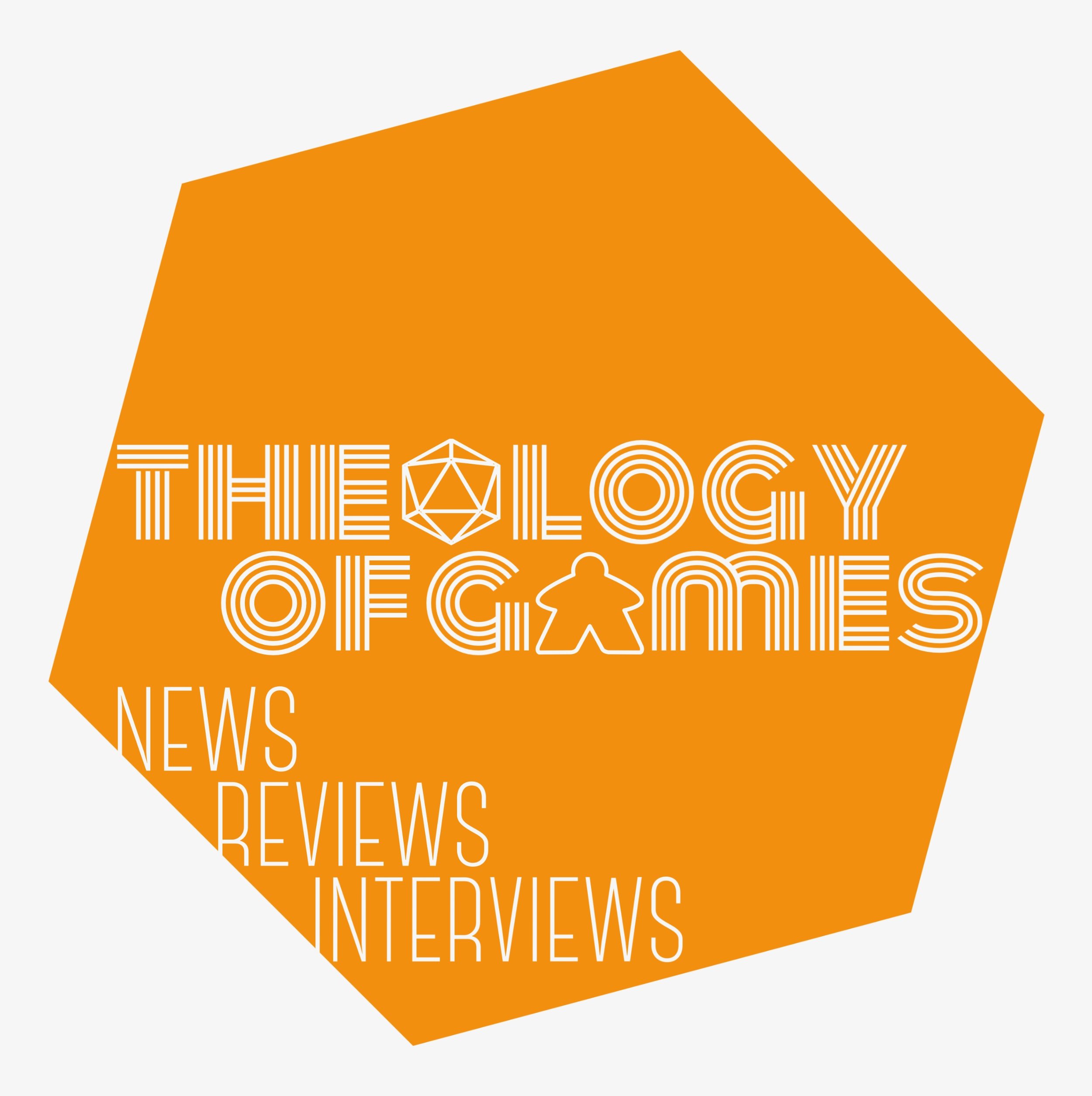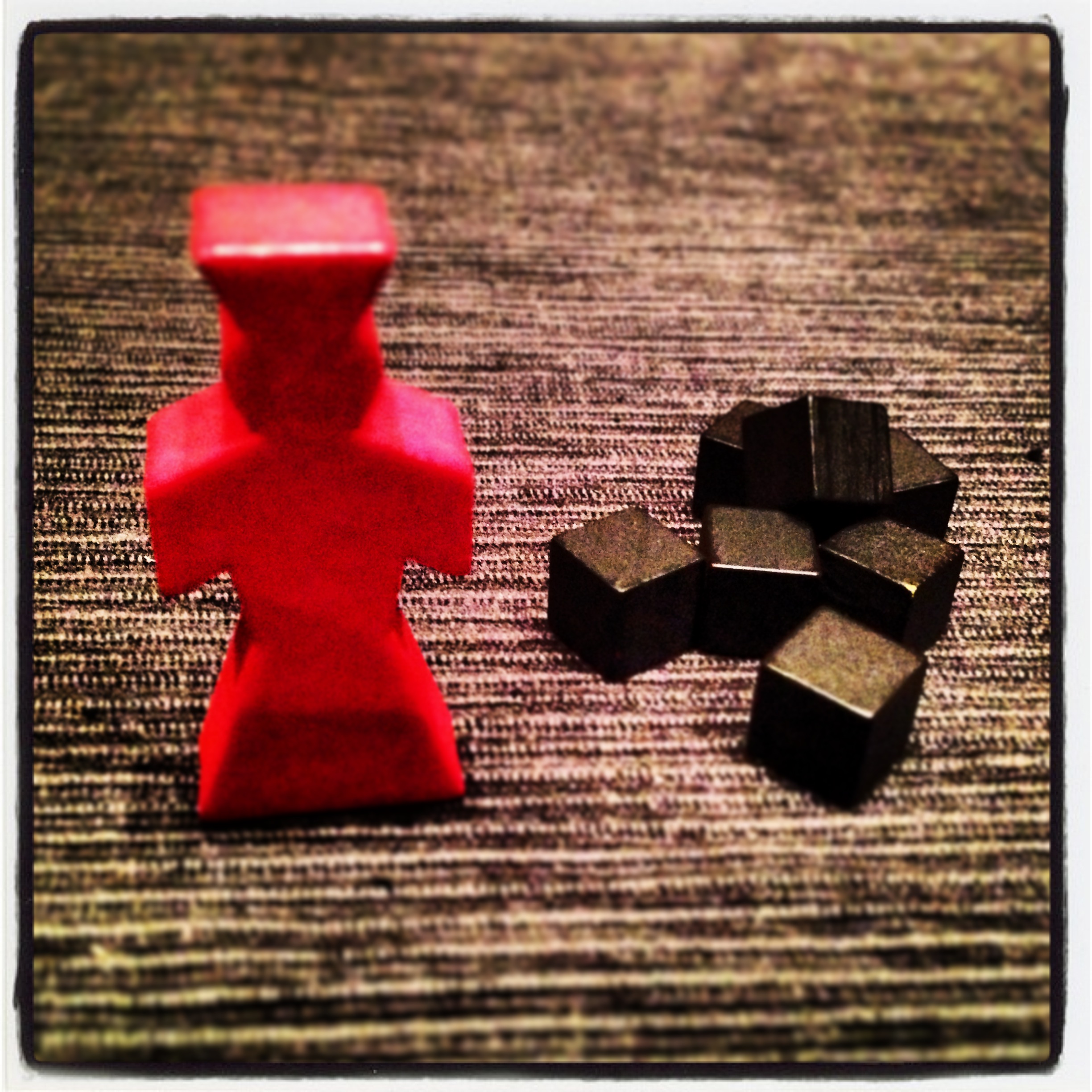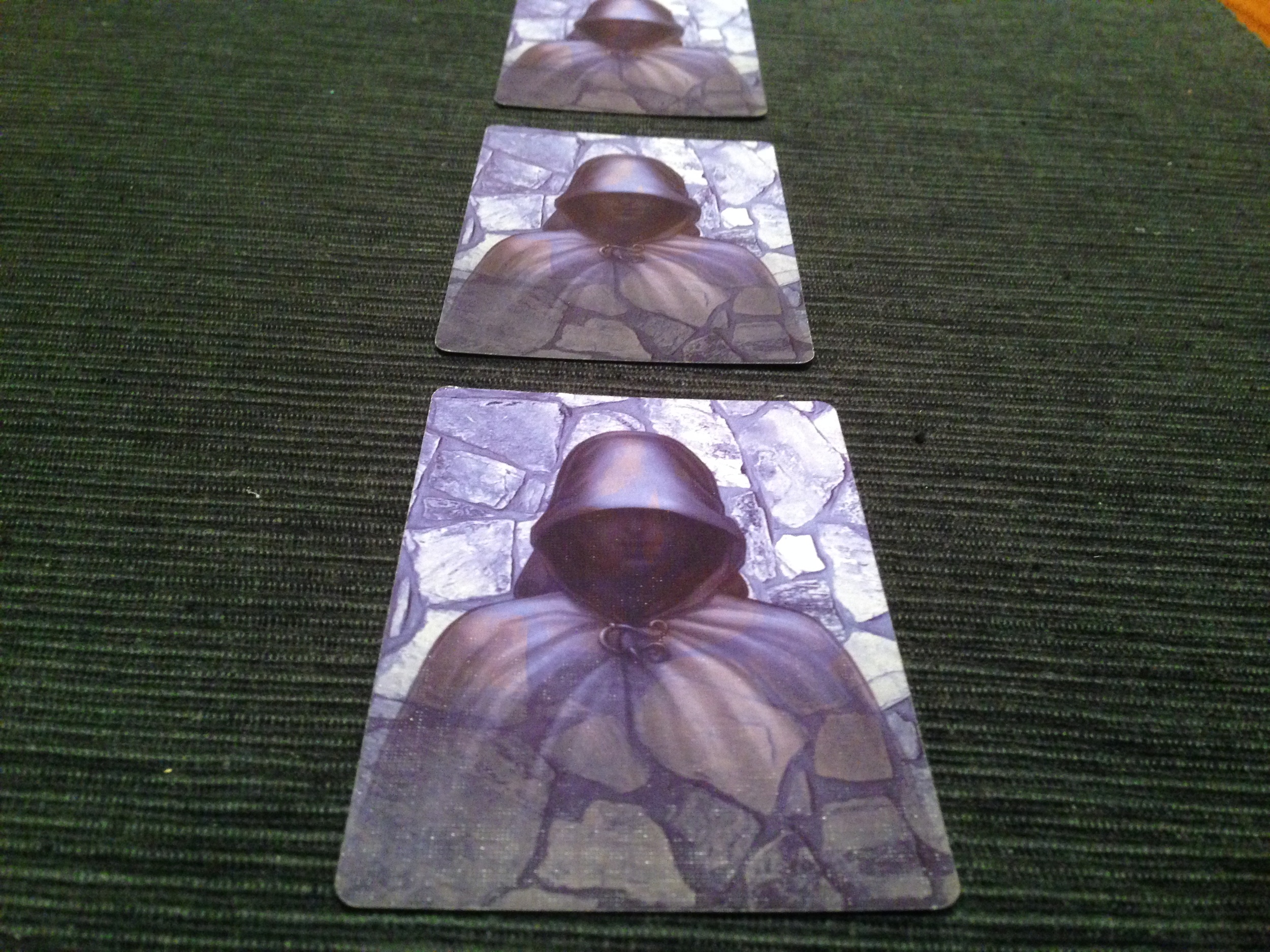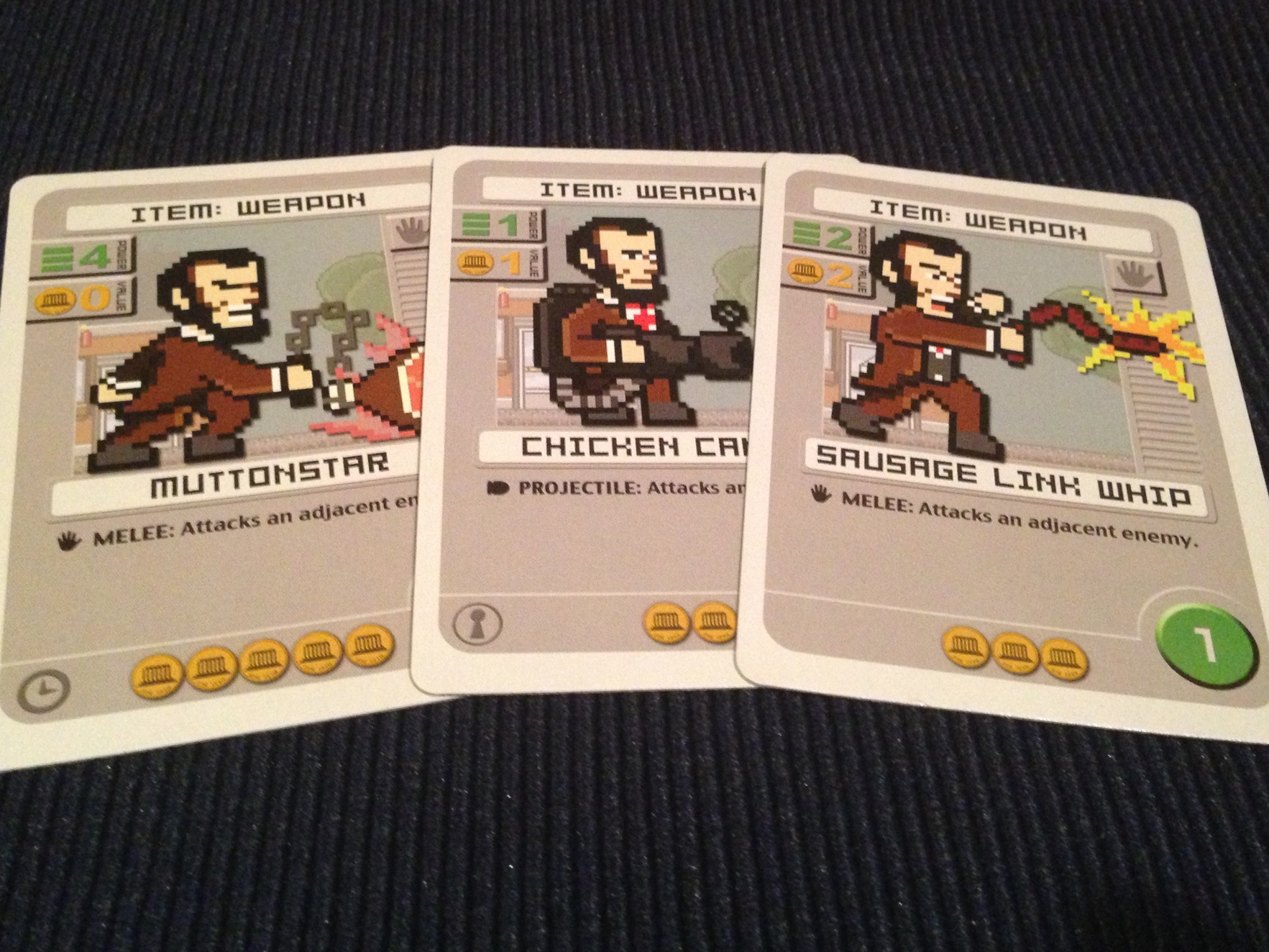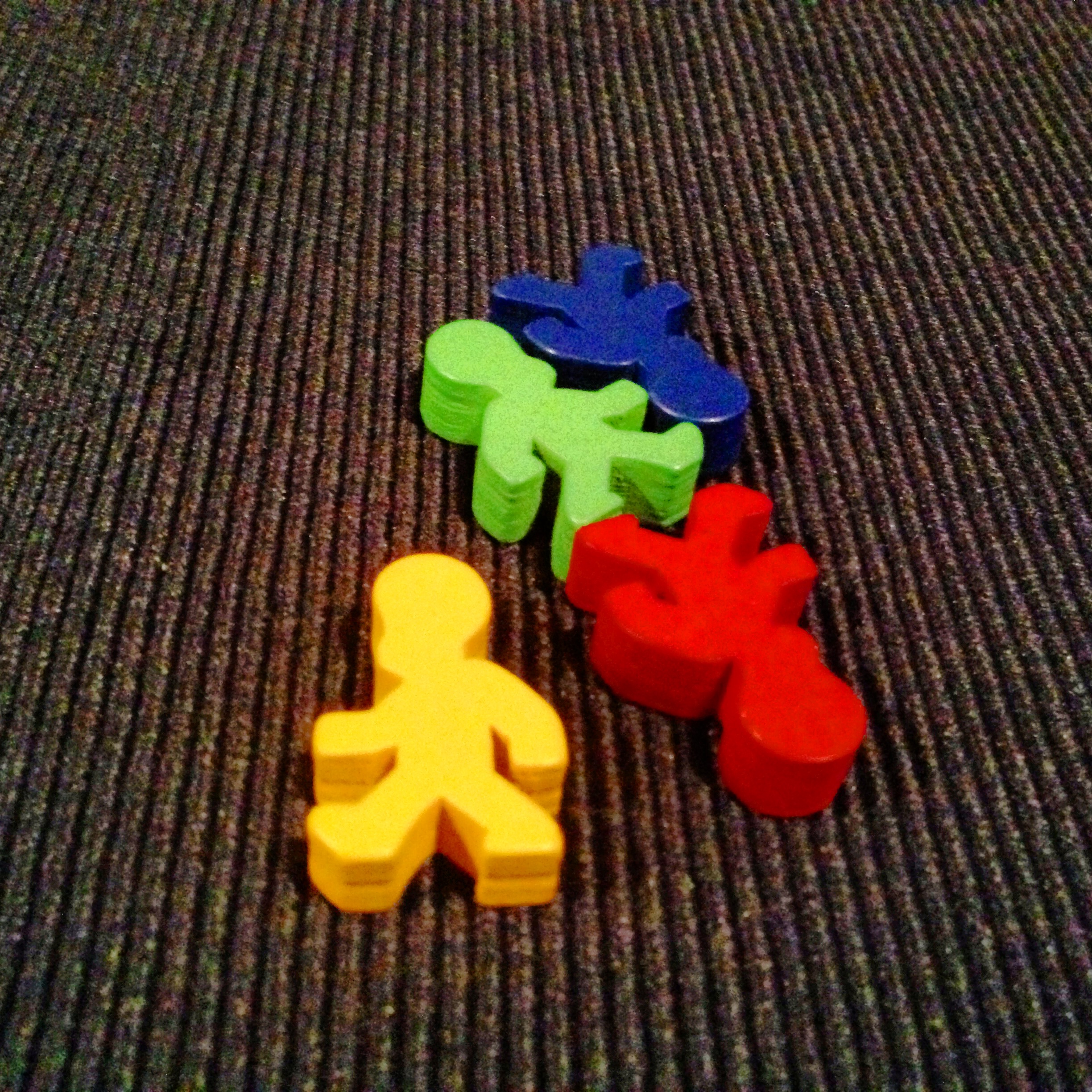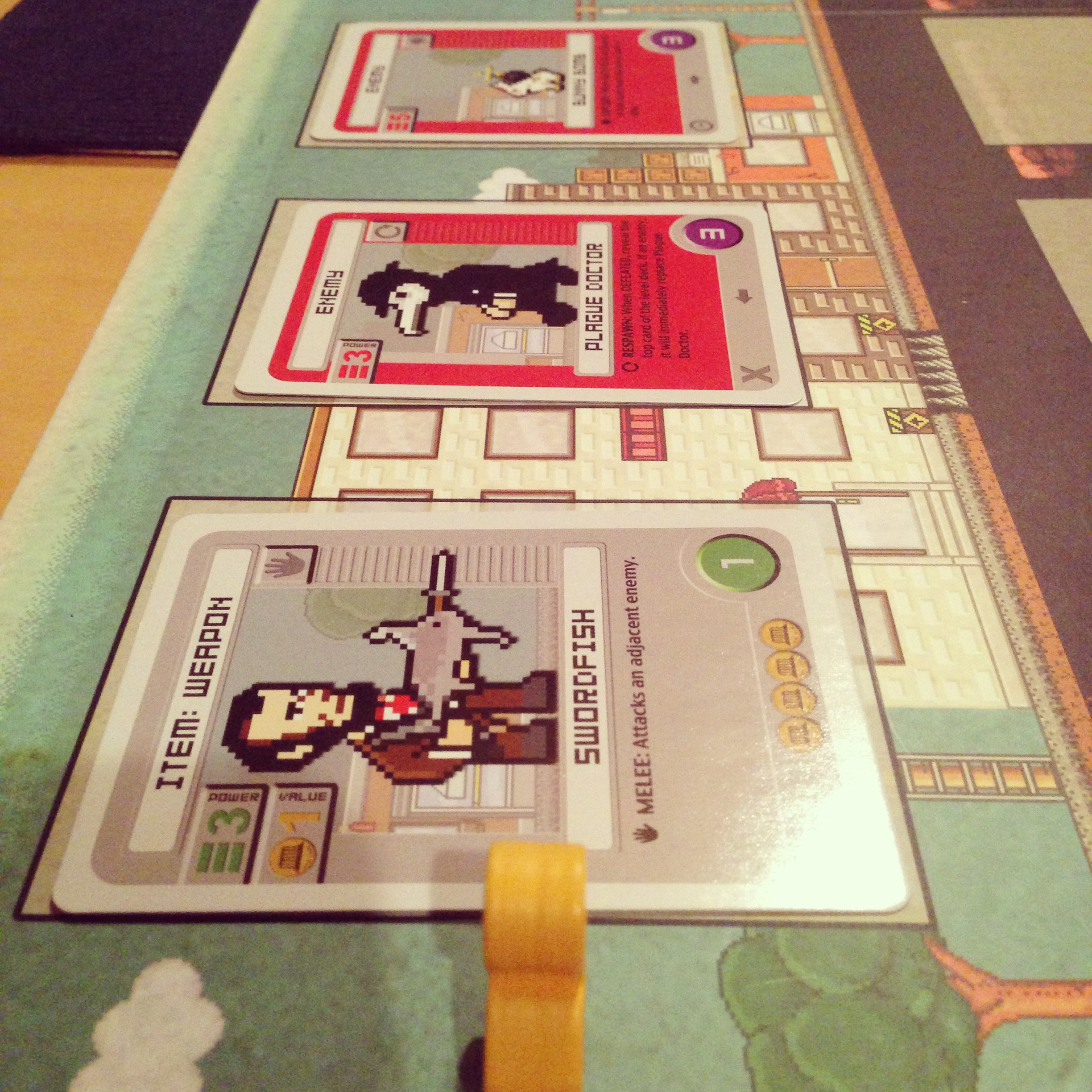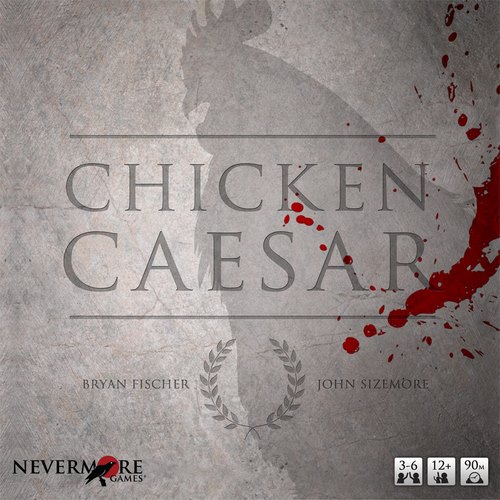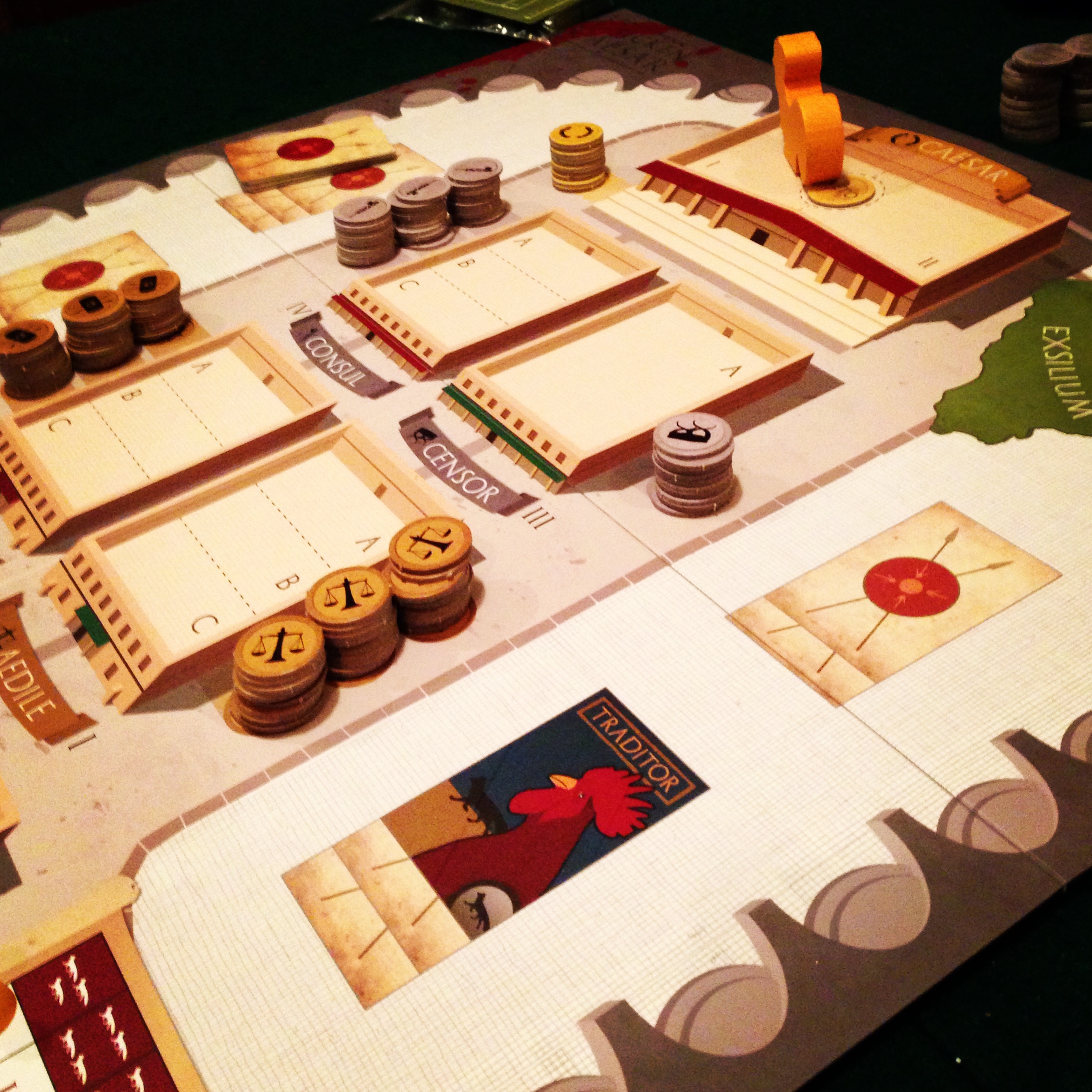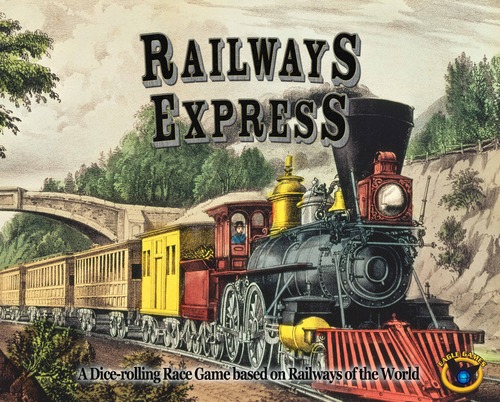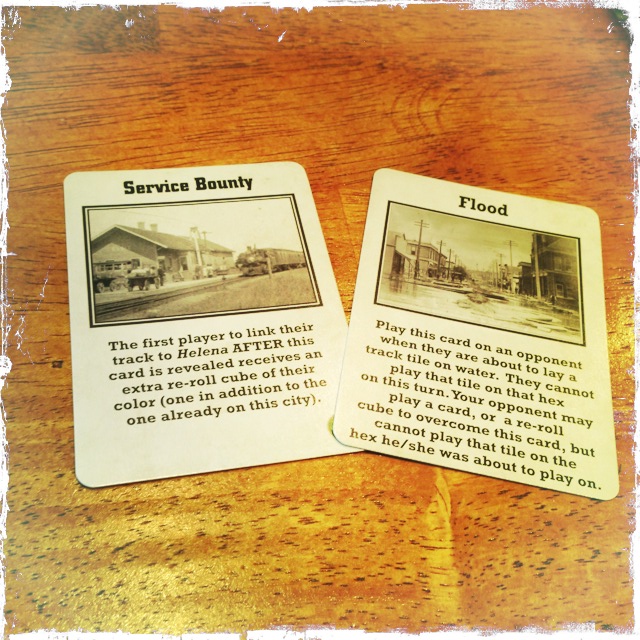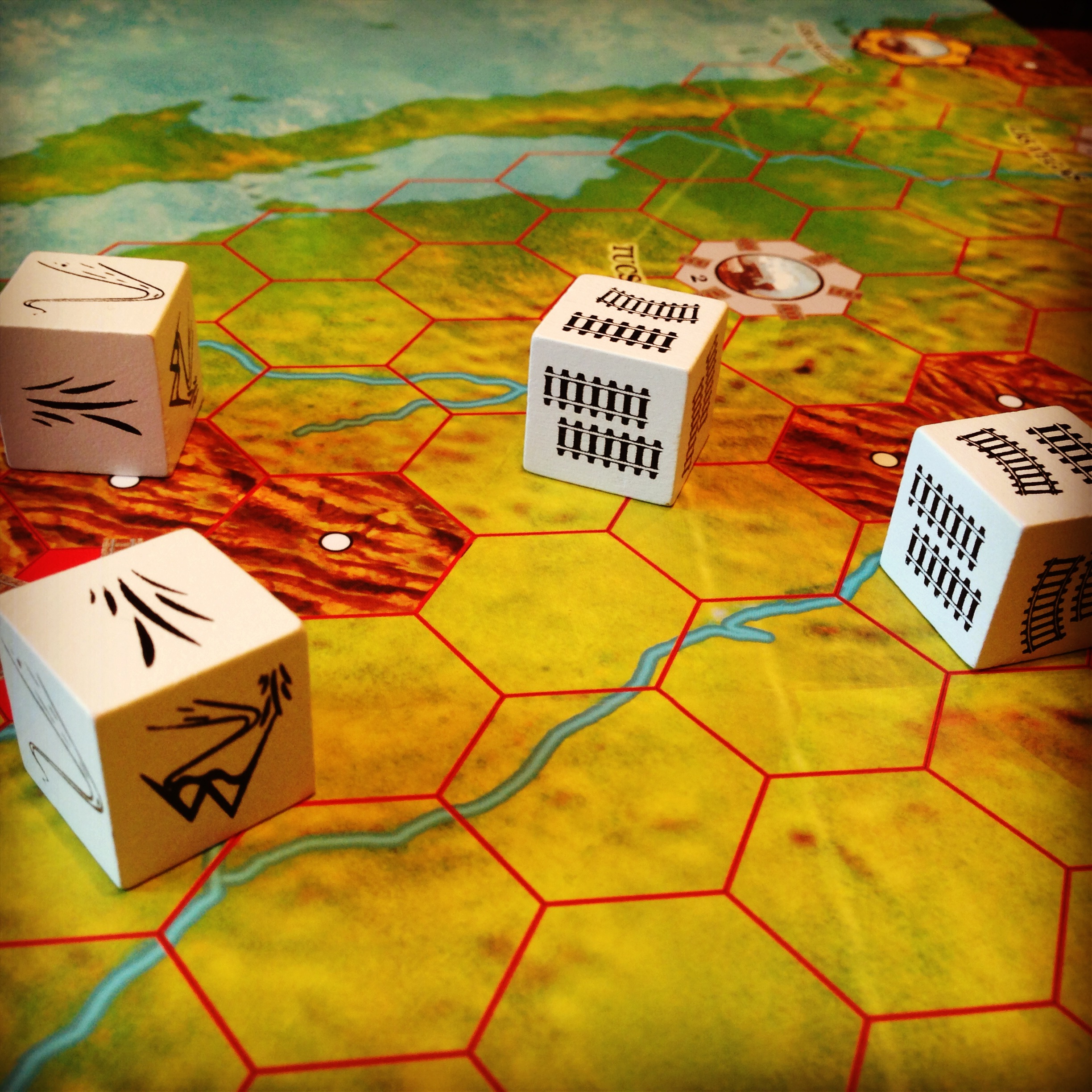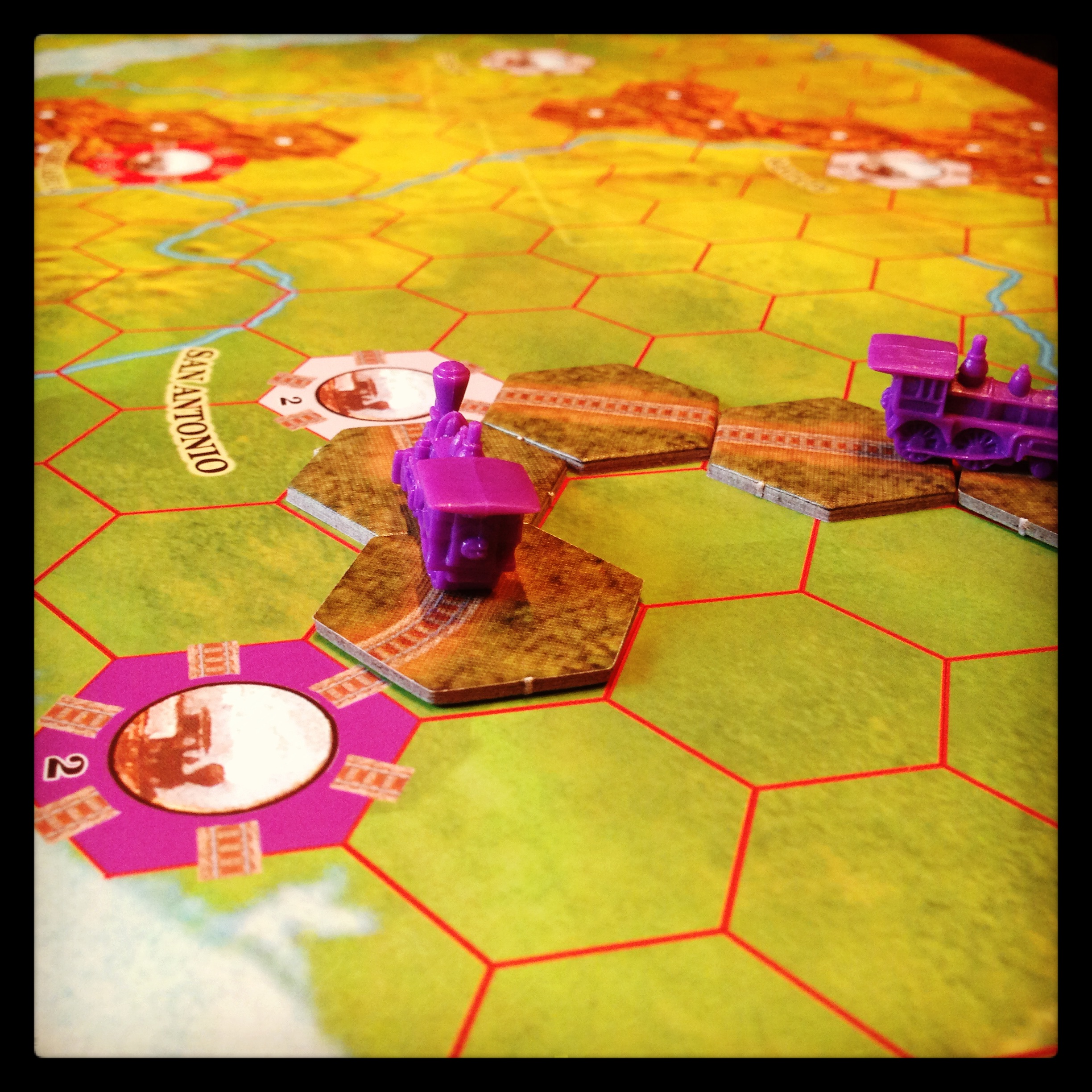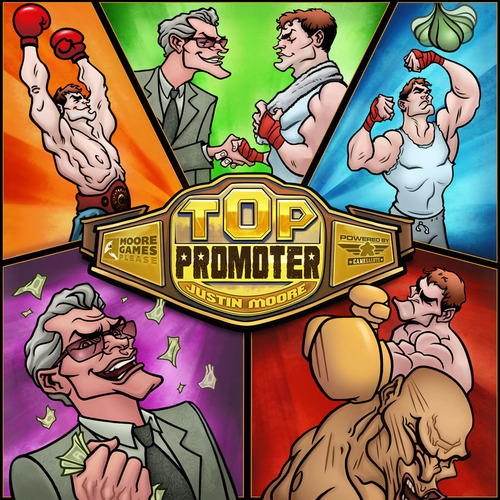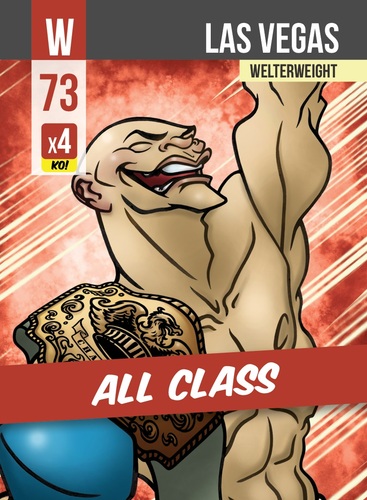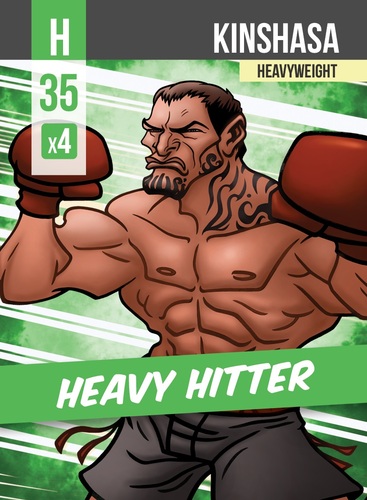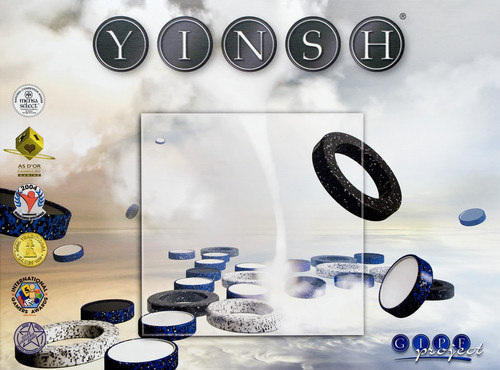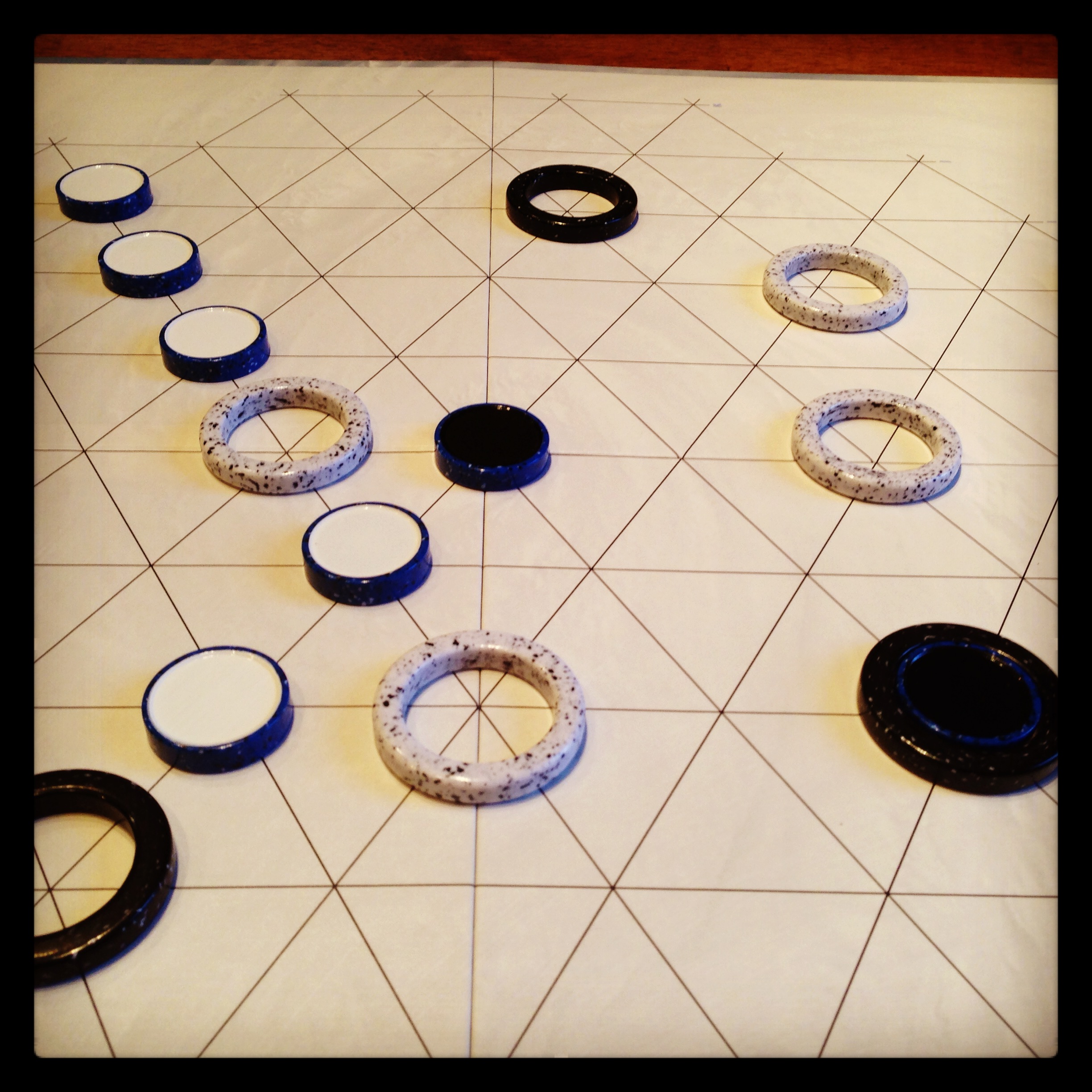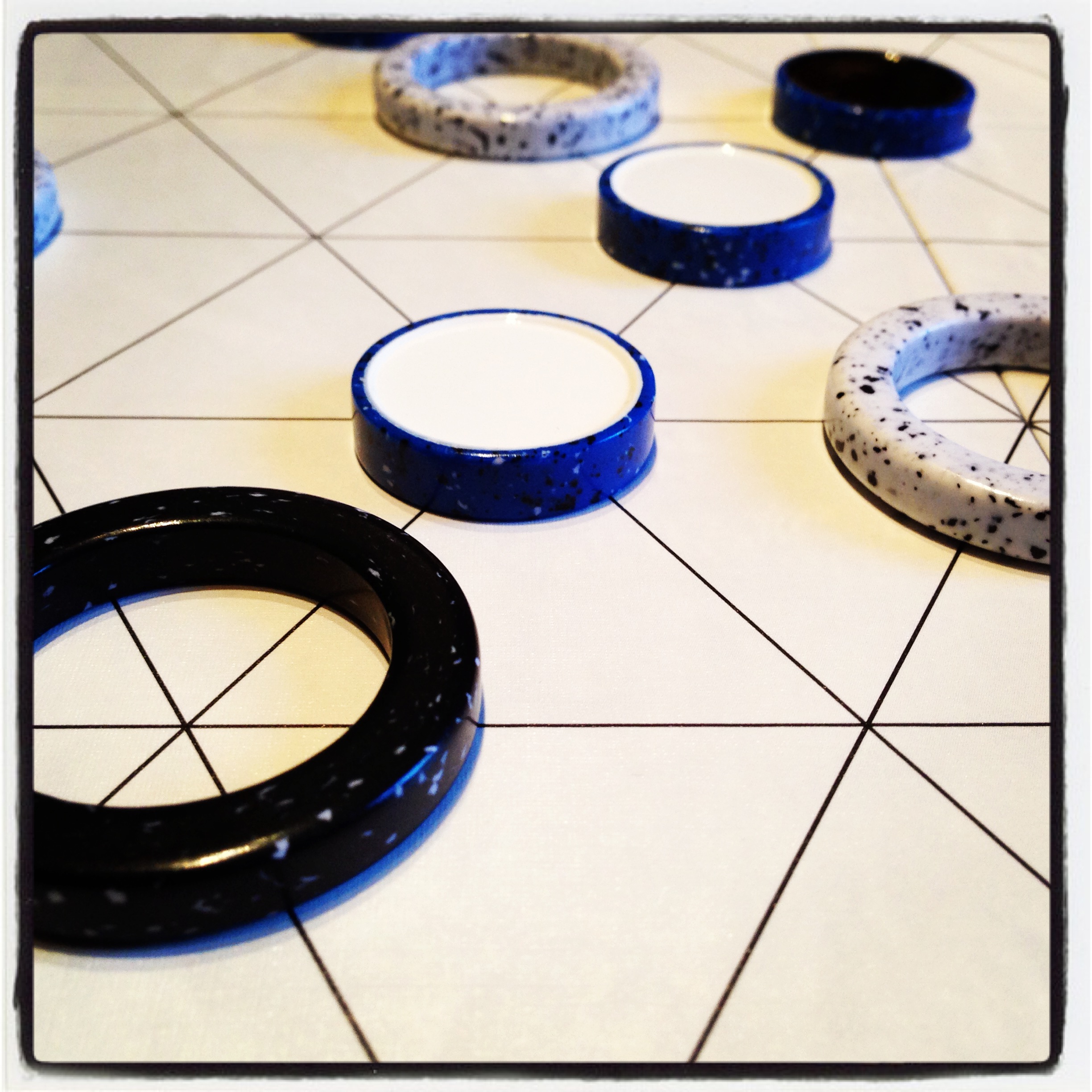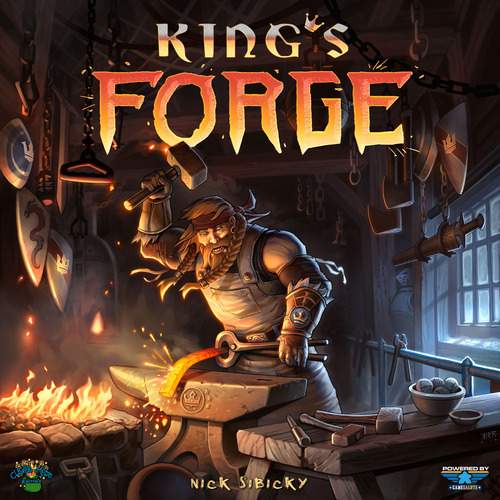Ultimate Werewolf: Inquisition—A Review
/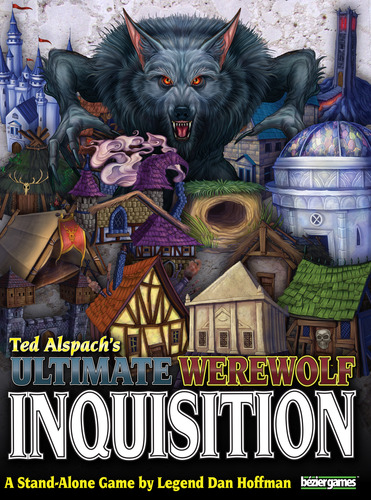 By Firestone
I've never been a big Mafia/Werewolf fan. It can be an incredibly fun time, but the player elimination means some people are always sitting on the sidelines waiting. And the bigger the game, the longer you're waiting... So when The Resistance came out—and there was no player elimination—I jumped at it. And it's now my favorite game.
By Firestone
I've never been a big Mafia/Werewolf fan. It can be an incredibly fun time, but the player elimination means some people are always sitting on the sidelines waiting. And the bigger the game, the longer you're waiting... So when The Resistance came out—and there was no player elimination—I jumped at it. And it's now my favorite game.
Ted Alspach and Bezier Games recently released Ultimate Werewolf: Inquisition, which promises some of the hidden roles and gameplay of Werewolf, with no player elimination. I'm intrigued. Will it knock The Resistance off the throne? Let's see...
The Overview
Ultimate Werewolf: Inquisition is part of the line of Ultimate Werewolf games that are coming out under Ted Alspach's Bezier Games. It plays 3-12 players, and is for ages 8 and up. It takes 30-60 minutes to play. One "side" will win—either the werewolves, or the good guys.
The Components
1 Rulebook
12 Inquisitor cards, with either a Werewolf or a Villager on them.
19 Hut cards, which are the "houses" that belong to the Residents in the game. Each one imparts some special action.
19 Resident cards, which match up with the Huts—there's one person card for every Hut card.
1 Grand Inquisitor meeple
50 wooden voting cubes
There's a distinction between Residents and Villagers. All Villagers are Residents, but not all Residents are Villagers—some are Werewolves...
First you'll hand out Inquisitor cards; this will vary depending on the number of players. A 3-player game has 1 Werewolf and 2 Villagers, up to a 12-player game, which has 5 Werewolves and 7 Villagers.
Then you decide which set of Resident/Hut cards you'll use. There's a whole section in the rulebook that recommends sets based on number of players, or if this one of your first games. The Resident cards also have positive or negative numbers on them, which allow you to try and find a good balance of cards (in which case the numbers will add up close to zero), or to skew things one way or the other if you find one side winning too often—higher numbers to help Villagers and lower numbers to help the Werewolves.
You'll set up two areas of your chosen sets. One grid of four across and three down with the Huts—faceup so the Huts and their powers are visible. Then you shuffle the Resident cards and create another four across and three down grid—facedown, so you have no idea which Resident is under that card. The important thing here is that there is one Resident for every Hut card, but their orientation in the grids is NOT identical.
Choose a random player to get the Grand Inquisitor meeple, and then give each player two voting cubes to start the game.
On the First Night, whoever the Grand Inquisitor tells everyone to close their eyes, and has the Werewolves open their eyes so they know who the other Werewolves are—this is skipped in a 3- or 4-player game since there's only one Werewolf.
For the Day Phase, each player, starting with the Grand Inquisitor, chooses a hut and either does the action on the hut, or takes two voting cubes. Either way, that hut is no longer available to choose that turn. As the game progresses there will be fewer and fewer huts, thanks to people being killed, so if there are no huts available, you just take two voting cubes. After everyone has chosen a hut, everyone gets a chance to vote on which Resident to kill. Starting with the Grand inquisitor, everyone who has a voting cube has to place one on a Resident; if you don't have a cube, you don't vote. Whichever Resident has the most votes is killed—remove the Resident and the associated Hut from the game. If there's a tie on votes, the Grand Inquisitor breaks ties.
If two columns have a single Resident left in them, they're combined without changing their orientation. (Some actions on Huts will change the orientation from vertical to horizontal.)
Now come the Night Phase. The Grand Inquisitor chooses a column that has two or more cards in it, and removes any votes on them. He picks them up and puts them in a stack keeping them in a strict order—we always have them stack the top card of the column on the one below it, and then those on the one below that (if there are three). This is important because now everyone closes their eyes and passes this stack around the circle. The person to the left of the Grand Inquisitor starts with the stack. If she's a Villager, she keeps her eyes closed and just makes some shuffling noises with the cards but doesn't change the order in any way. If she's a Werewolf, she can open her eyes and change the order of the cards. Each person will say the name of the person they're passing to—or just say "Passing," or whatever—and for a brief moment those two can open their eyes just to make the exchange, but then Villagers have to close their eyes, lest they see a Werewolf turn the cards over and start rearranging. The cards will eventually make their way back to the Grand Inquisitor, who will shuffle or rearrange or not, and then everyone opens their eyes. The Inquisitor then places them back facedown in the column in the same order they were taken: bottom card on the bottom of the column, then the next above that, and the next at the top.
All of this keeping-things-in-order stuff is important because whatever Resident is at the bottom of that column is killed. The Werewolves set it up.
The actions here are admittedly very clunky. This phase shouldn't be a way for Villagers to figure out who the Werewolves are, which is why everyone makes noises and shuffles the cards around as though they were rearranging them. In essence, everyone should "act" like a Werewolf so that no one is outed as a Werewolf because they made noises or took longer than anyone else or whatever. Clunky.
If a Werewolf is killed in this phase, remove votes from all vertical Residents and shuffle them together and deal out a new grid. This is because if a Werewolf is killed at Night, then it's because that column had nothing but Werewolves and they had no choice but to kill one of their own. So the shuffling evens things out again.
A new day starts with the Grand Inquisitor getting passed to the left, and columns with only one Resident getting combined. The game ends when either all of the Werewolves are dead (the Villlagers win), or of there are more Werewolves in the village at any time than there are Villagers—in which case the Werewolves win.
I'll go over the Huts and their special abilities. The number in parentheses is the number you use when you're trying to balance (or not unbalance) your choice of Residents in the game—high numbers help Villagers, and low ones help the Werewolves.
Villager/Werewolf (+0)—Take two voting cubes from the supply, and place one of them on any Resident.
Seer (+8)—Look at any vertically oriented Resident, and place it back in the same spot, but oriented horizontally. Neither the Seer (in subsequent turns) nor the Apprentice Seer may look at this card until something changes its orientation back to vertical.
Apprentice Seer (+5)—Pay one voting cube to look at any vertically oriented Resident, and place it back in the same spot, but oriented horizontally. Neither the Apprentice Seer (in subsequent turns) nor the Seer may look at this card until something changes its orientation back to vertical.
Bodyguard (+2)—Protect one Resident by removing all voting cubes from it, and placing the Bodyguard Hut on that Resident. No more votes can be placed on it this round. Remove the Bodyguard at the start of the Night Phase before a column is chosen to pass around.
Hunter (+1)—Take three votes from the supply and place them on one Resident.
Mason (+3—Pay two voting cubes to look at the Inquisitor card of another player. You can't show the card, but you can say whatever you want about it. (This role shouldn't be used in games with fewer than 5 players.)
Minion (+3)—Take two votes from the supply and place both of them on a Resident card that already has at least one vote on it.
Mayor (+1)—Immediately give the Grand Inquisitor to any player (including yourself). This changes who will start voting, and who picks a column of cards to pass around. The Inquisitor gets passed to the left at the end of the turn, as usual.
Prince (+3)—Take four votes from the supply.
Sorcerer (+5)—Look at any horizontally oriented Resident, place it back in the same orientation, take two votes from the supply, and place them on the card you just looked at.
Witch (+1)—Move all votes from Resident card to any other Resident card.
Cursed (-1)—Take four votes from the supply. If someone uses the Cursed Hut during the day, and that Resident is killed that night, it becomes a Werewolf. That column's cards (and the Cursed) are shuffled and placed back in the column. The Cursed acts as a Werewolf from that point forward—including determining numbers of Werewolves for victory.
Troublemaker (-5)—Pay one vote to shuffle a row or column of Resident cards. First, set aside votes on those cards, but keep them near the spot they were on. Shuffle the cards, place them back vertically, and then place the votes back onto the card that is now in the spot.
Wolf Cub (-2)—Take three votes from the supply. If the Wolf Cub is lynched on the day someone uses the Hut, the Werewolves get to kill two Residents that night. You do one round of picking a column, passing it, and killing the bottom Resident. And then you do that all over again. The Wolf Cub is not considered a Werewolf.
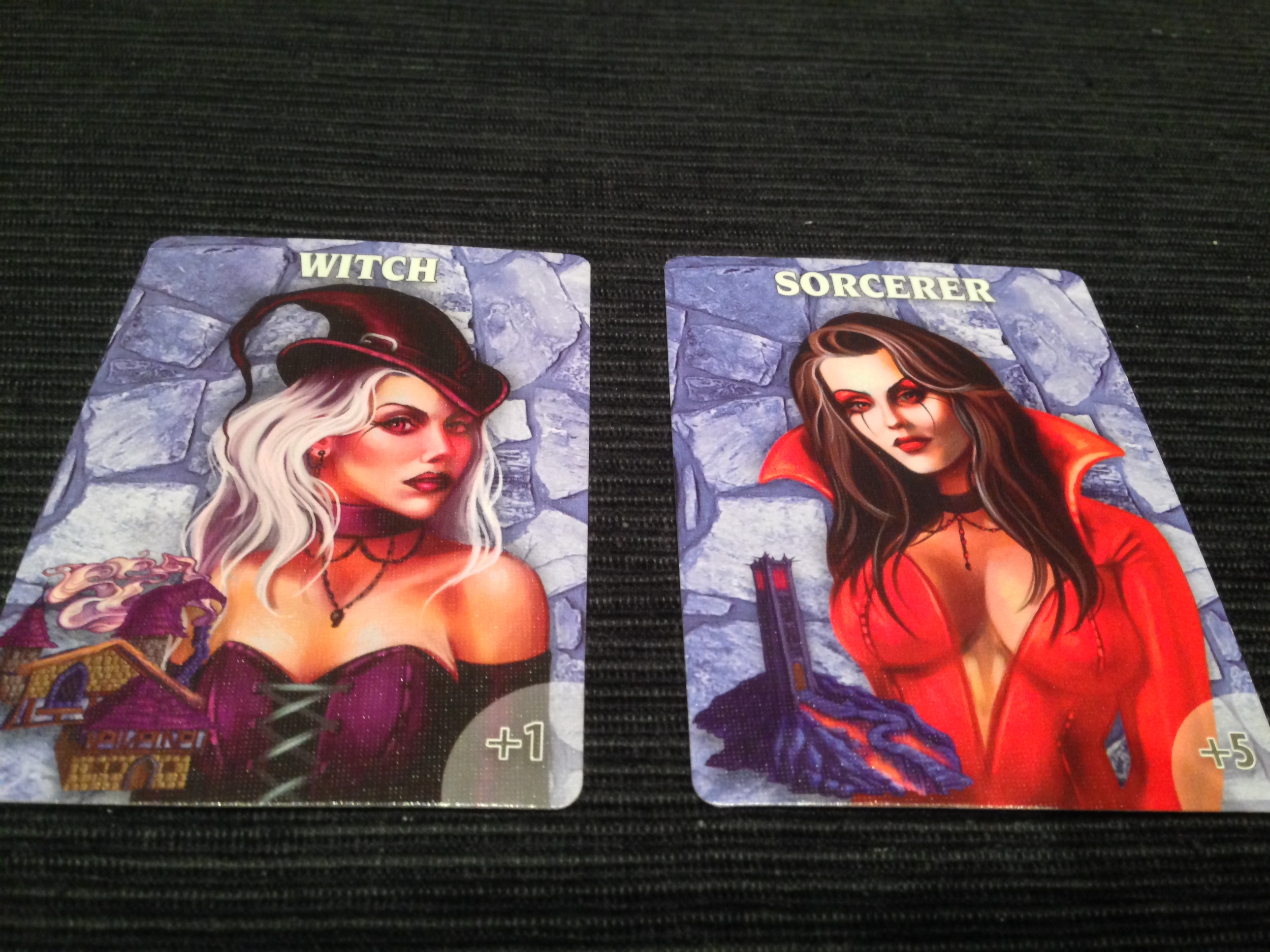 The Verdict—I like this game—probably more than I should, honestly. The game plays any number between 3 and 12; I've played with as few as 4 and as many as 10, and there are upsides and downsides with those extremes. It actually plays surprisingly well with the low number; you can't play Resistance with 3 or 4, but you can play this. With the higher numbers, it's cool because there are more Werewolves, and more interesting Residents, but it also has its own problems. In our game, one player was a player or two to the right of the starting Grand Inquisitor. And then, because of where we'd figured some Werewolves were, we kept taking the Mayor and keeping the Inquisitor in that area. It worked well for the Villagers, but over the course of the game that guy had very little to do on his turn. Early in the game, the only Residents left were the generic Villager/Werewolf Huts, so he was forced to take those. Then as the game progressed and people died, when it would finally get around to him there wouldn't be any Huts left, so he just took two voting cubes. He was pretty dang bored, and it wasn't the group trying to keep him out, it was the game's mechanisms creating that for him. It could have happened to anyone, and it probably won't happen every game, but it happened that game, and his experience was poor.
The Verdict—I like this game—probably more than I should, honestly. The game plays any number between 3 and 12; I've played with as few as 4 and as many as 10, and there are upsides and downsides with those extremes. It actually plays surprisingly well with the low number; you can't play Resistance with 3 or 4, but you can play this. With the higher numbers, it's cool because there are more Werewolves, and more interesting Residents, but it also has its own problems. In our game, one player was a player or two to the right of the starting Grand Inquisitor. And then, because of where we'd figured some Werewolves were, we kept taking the Mayor and keeping the Inquisitor in that area. It worked well for the Villagers, but over the course of the game that guy had very little to do on his turn. Early in the game, the only Residents left were the generic Villager/Werewolf Huts, so he was forced to take those. Then as the game progressed and people died, when it would finally get around to him there wouldn't be any Huts left, so he just took two voting cubes. He was pretty dang bored, and it wasn't the group trying to keep him out, it was the game's mechanisms creating that for him. It could have happened to anyone, and it probably won't happen every game, but it happened that game, and his experience was poor.
It's very interesting that—unlike a game such as The Resistance, where getting outed means you're essentially done—getting outed as a Werewolf here (or even outing yourself!) isn't the end of the world. There are times where revealing yourself is necessary to save one of your Werewolf residents. But you're still in the game, and there are still things to do and ways to mess with the Villagers. They can't shut you down, but now they have to adjust their play to keep you away from certain powerful Huts, such as the Mayor. It feels weird that being revealed isn't bad, but I think it's interesting.
I've noticed that every single game seems to come down to the wire, and I think the game sort of forces the game to even out and stay close until the end. I'm not sure how it does it, or even if its intentional, but we haven't had a blowout in any of the half-dozen games we've played. The downside of this is that a couple of times the win has come down to mostly blind luck and guessing. That hasn't always happened, but when it does, it feels a little unsatisfying.
As I said, the Night Phase is clunky. Having to have everyone shuffle the cards around, and spend extra time doing it, and making noise just feels weird, but I have no idea what else they could have done. So while it's not great, it's fine in the end.
I do feel I should make mention of the artwork. Most of it is fine and completely innocuous, but the Witch and Sorcerer look more like two ladies who just went shopping for Halloween and decided to grab the "Sexy Witch" and "Sexy Sorcerer" costumes. The Sorcerer especially looks like Kate Upton in a black wig. They're not terrible, but it's just something to consider, and I felt I needed to point out. It's disappointing to see a publisher going that route on what should be a family friendly game. And if they bother you that much you can always choose not to include those roles in your game.
So who would I play this with? Well, it often goes as long as a game of The Resistance, and I would always choose The Resistance over this. If I only had 3 or 4 players, I could see pulling this out with my game group, but we're big-time Resistance fans, so that wins. I would bring this out with nongamers, though—in a heartbeat. The Resistance is very different, and takes some time to understand what you're doing and how much you should be talking and voting and just so much... But this would be a GREAT game to ease people into that sort of game. There are hidden roles, but it's not a disaster if you play it "wrong" and out yourself. And the gameplay is fairly straightforward. And it's short. All of this means that this is going onto my short-list of games to play with nongamers, newbies, and youth groups.
And if your group really likes to play Werewolf, they'll probably like this! It's maybe not as purely social as traditional Werewolf is, but it has some of the feel, and there's no elimination.
The Final Verdict—Ultimate Werewolf: Inquisition isn't perfect, and it will never replace The Resistance for me or my game group. But I like it. I like what it tries to do, and I like what it accomplishes, and I have a fun time while I'm playing it. It's at a perfect level for nongamers, and it will be the game I use to ease my family into this style of game before I eventually spring The Resistance on them... And since there are only 4 of us in the family, we may never get to The Resistance, so this may be it. And that's okay, because it's a solid game.
We'd like to thank Ted Alspach at Bezier Games for providing a review copy of Ultimate Werewolf: Inquisition. This in no way affected our opinion of the game.
